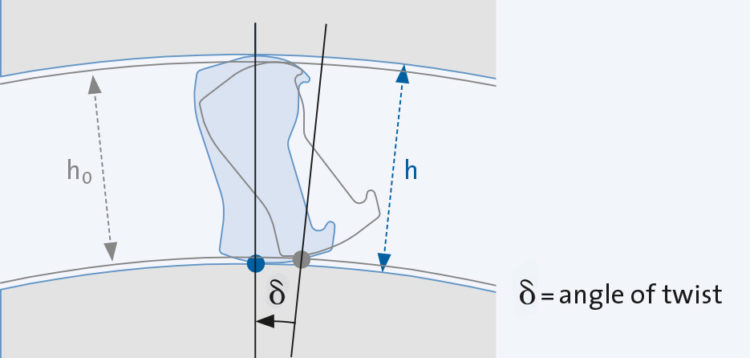Freewheel clutches are machine elements which permit rotation in one direction (idle) but brace against or transfer torque in the opposite direction.
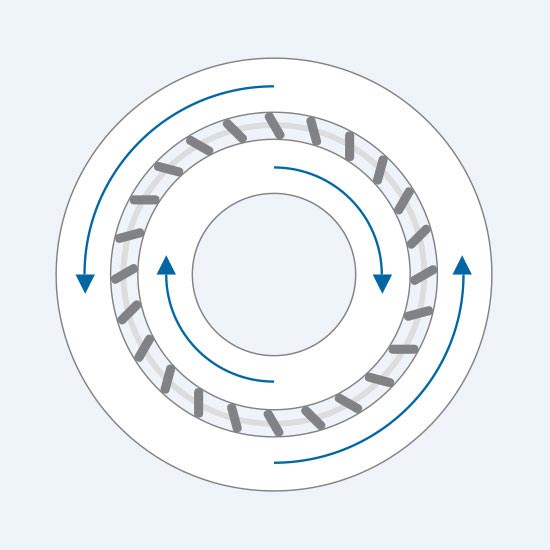
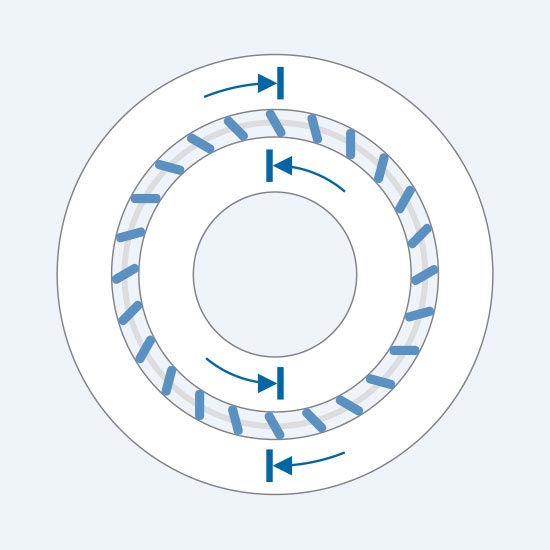
Force transfer takes place from the driving side to the driven side. Torque can be applied via the outer ring or the inner ring as desired.
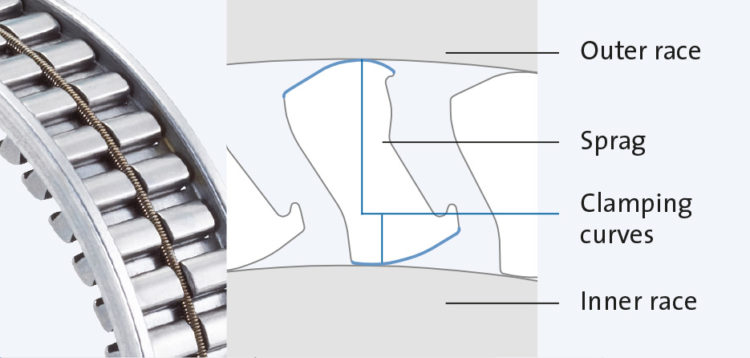
The sprags slide on the rotating raceway surfaces of the rings (sliding friction) during rotary motion in the idle direction. Torque is not transferred from the driving side to the driven side under these conditions.
The inner and outer rings define a constant gap height h0 (start gap) in which the sprags slide over the raceway surfaces of the rings in the idle direction.
The sprags are spring-loaded to ensure constant
contact between the sprags and rings.
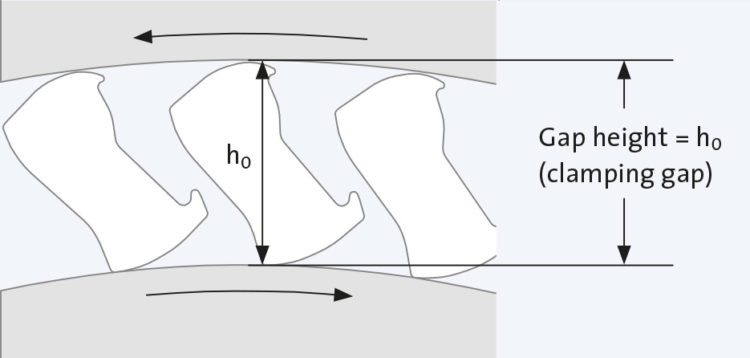
If rotary motion opposite the idle direction should occur, a non-positive connection between rings and sprags is created by static friction on the contact surfaces. Torque will be transmitted via the sprags.
As the transfer of force increases, the sprags upright themselves between the rings and expand the sprag gap to gap height h (elastic deformation). The connecting parts rotate with respect to one another in the amount of angle δ (delta).
The uprighting of sprags ends once a balance of forces is established between the applied torque and the reaction forces exerted in the freewheel clutch. Subsequently the force is slaved or transferred to the driven side.
The twisting angle δ is necessary to build up the balance of forces.
If the direction of rotation changes from the clamping direction to the idle direction, the sprag elements are twisted in the opposite direction. The sprags assume their idle positions again. This indexing process takes place with high repeatability and precision.
